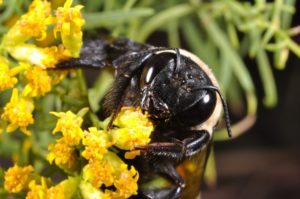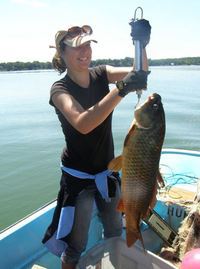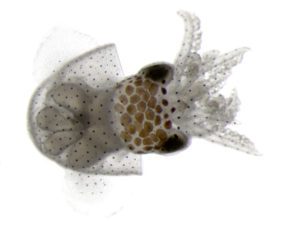This summer, undergraduate students are working alongside scientists, learning lab and field techniques, and making discoveries with all manner of buzzing, biting, and sometimes beautiful creatures. Check out these creepy-crawly research jobs.
Bees, flowers, butterflies, oh my
Ever consider applying for a job that requires you to be comfortable around stinging insects? Students doing research in the landscape ecology of beneficial insects for the Department of Entomology need thick skin, or at least no aversion to bugs.

Entomology research has undergraduates driving around the state, working with farmers, collecting and documenting bug specimens, and recording data.
Gratton Lab, headed by Professor Claudio Gratton, aims to enhance and conserve beneficial arthropods in agricultural landscapes. They want to know how land management can support helpful bugs, like bumble and honey bees, which pollinate crops and provide other important services in natural systems.
While students avoid the pain of getting stung by bees, they get the pleasure of working with butterflies and flowers. They assess the value of grassland habitats for conserving monarchs and determine if floral plantings could attract wild bees near cucumber fields. Students also have the sweet task of measuring honey production.
Something’s fishy here

Students working for the Center for Limnology this summer have a weird duty: electrocuting fish. Don’t worry, the fish don’t die. They just stay still long enough to be caught for the annual fish survey.
The survey is a part of Limnology’s ongoing research funded by the National Science Foundation to understand how environmental factors and manmade changes can impact freshwater lakes. Survey data are used worldwide.
Students ride a boat that drops electrical lines in the water to immobilize and catch fish, a common scientific survey method, but they also use a variety of nets and traps. Fish are weighed, measured, and returned to the lake. The research takes place in Madison and at the Trout Lake Station in Vilas County, where students stay in cabins.
Rain, high winds, and mosquitos won’t stop these student scientists. Limnology research specialist Ted Bier says his student workers never whine. Many of them enjoy fishing, so they’re getting paid to learn about a hobby they love.
The squid room
And the prize for working with unique creatures goes to…Mandel Lab for their Hawaiian bobtail squid husbandry positions.

Students working in the Department of Medical Microbiology & Immunology under Professor Mark Mandel and Katie Bultman spend quality time in the Microbial Sciences Building “squid room.” There, they feed shrimp to the small creatures, clean the facility, set up mating to increase female clutch production, and maintain water chemistry for optimum squid health.
Mandel Lab is studying vital host-microbe interactions. Hawaiian bobtail squid are nocturnal hunters who use a collection of bacteria in a special organ to glow and mimic moonlight, helping them hide their shadow from predators. Scientists are studying how bacteria colonize the squid. Watch the video below to learn more about these amazing cephalopods.
In addition to squid care, students help analyze experiments and learn lab skills that can apply to any future research position—whether or not it involves curious creatures.